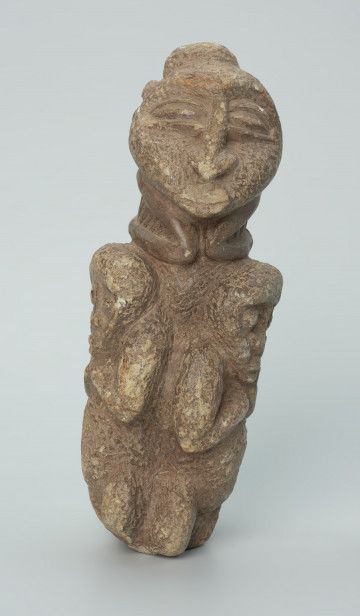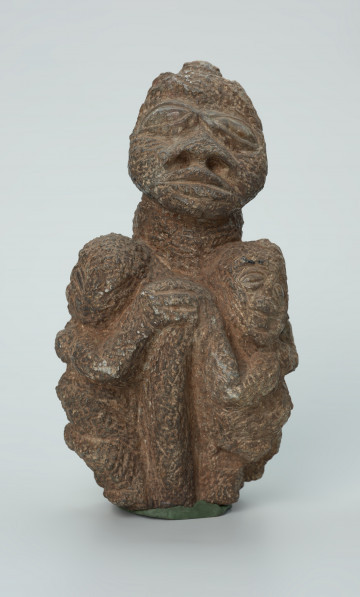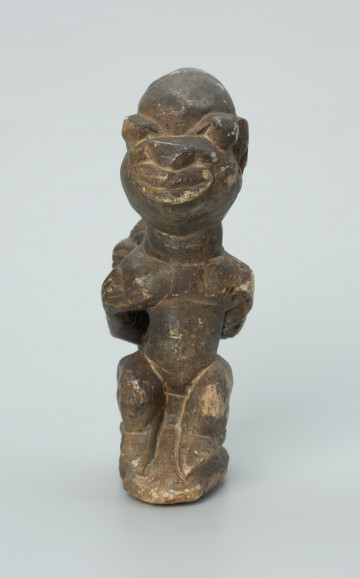
Figure of cult of dead
1901 — 1973
National Museum in Szczecin
Part of the collection: Stone figurines from West Africa
Figures of the cult of the dead pomdo (plural pomda or pomta) represent a human figure - probably a woman surrounded by five smaller figures, probably children. The Kissi treat the pomda statues dug up during agricultural work as returning ancestors. They place them on family altars and make offerings of food and animal blood to them. Pomda are divided into several types depending on their function. Some of them were used in burial rites. They were buried with the deceased. After a year, the sculpture was unearthed, wrapped in fabric and sometimes accompanied by an attribute such as a weapon or tool, and placed on a family altar. Others were used, among other things, to foretell the future. The figure in question was carved in soapstone, a carving material that is quite rare in Africa compared to wood. Steatite, known as tailor's chalk or soapstone, is a soft microcrystalline rock with a high concentration of talc and a grey, pink or greenish colour. Soft rocks are easily worked, which is why the carver uses tools used for woodworking such as a knife, narrow-bladed chisel or axe. African stone carving refers to the symbolic properties of this raw material, which is considered durable and indestructible. The artist usually carves the head of the figure first, then shapes its torso and limbs. The head is considered the seat of the human soul and thoughts. Figures with children depicting motherhood, are usually a symbol of fertility. They are also meant to counteract infertility, which can threaten individuals and the community as a whole.
Katarzyna Findlik-Gawron
Author / creator
Dimensions
cały obiekt: height: 27,3 cm, width: 14,7 cm
Object type
figure
Creation time / dating
Creation / finding place
Identification number
Location / status

1901 — 1973
National Museum in Szczecin

1901 — 1973
National Museum in Szczecin

1901 — 1971
National Museum in Szczecin
DISCOVER this TOPIC
Museum of King Jan III's Palace at Wilanów
DISCOVER this PATH
Educational path